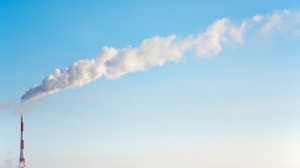Understanding Pollution Liability Insurance
March 13, 2013 – Orange County, California

Excavation & Grading
A local contractor was working on a site preparation project. As he was grading the worksite, which by the way had a very rough surface, the contractor was instructed to apply a thick spread of soil composite over the entire area as the contract had called for. Unbeknown to the contractor, he spread a pocket of highly concentrated contaminant in the process of grading the site. The worksite now contained tons of contaminated soil. As you can imagine the owner of the property filed a claim against the contractor for the contamination of his property due to the contractor spreading it on his soil. This very expensive claim was denied by his insurance carrier due to the pollution exclusion contained in the contractor’s policy. Another example would be a general contractor was asked to remove dirt at a local delivery terminal. As directed, he had it moved to a local landfill. Unfortunately, later he was named in a claim as the soil was polluted by a truck that had overturned on that property and caused a spill that had happened months earlier and of which the contractor had no knowledge. Eventually, he was dismissed from the claim, but his considerable legal expenses were not covered by his insurance policy, and he had to pay them out of his own pocket.
Janitorial Contractor
While doing work at a local office complex, a cleaning company inadvertently mixed two very toxic cleaners; one was ammonia based and the other one was chlorine based. The result of this accident was a poisonous cloud of ammonia chloride that caused severe breathing problems in many of the people working in those offices. A claim of something like this could easily result in well over one hundred thousand dollars being paid out.
Painting Contractor
A painting contractor took a job painting the entire inside of an assisted living facility. In doing so, the contractor did not adequately make sure that the facility was vented properly, and, in turn, several patients were overcome with the fumes of the paint and sued the painting contractor. As you can imagine, this type of claim can run thousands of dollars, easily reaching over a quarter of a million dollars. Also, think about when you are transporting the paints and you have an accident. Will your current insurance pay for the spill and clean-up?
HVAC Contractor
A local HVAC contractor signed a contract to install an HVAC system in a new building. After the building was open for a few weeks, the building was forced to close due to the occupants being overcome with breathing problems and headaches. As in most lawsuits, every contractor that worked on that project was sued. During discovery, it was determined that the system was installed exactly as specs described. However, since the contractor did not have Pollution Liability Coverage, he was forced to absorb thousands of dollars in uncovered defense costs because of no coverage.
Now, we can probably find many more examples, but I believe you can see how in certain situations having Pollution Liability Coverage should be considered. If you would like to learn more about pollution liability insurance, PJO Insurance Brokerage would welcome the opportunity to discuss with you how this coverage could benefit your company.
Written By: Patrick O’Neill – Owner
107 Via Estrada, Unit A
Laguna Woods, California 92637
Office: 949-236-0971
Website: http://PJOBrokerage.com/California
Category: Liability Insurance
Genre: Business





